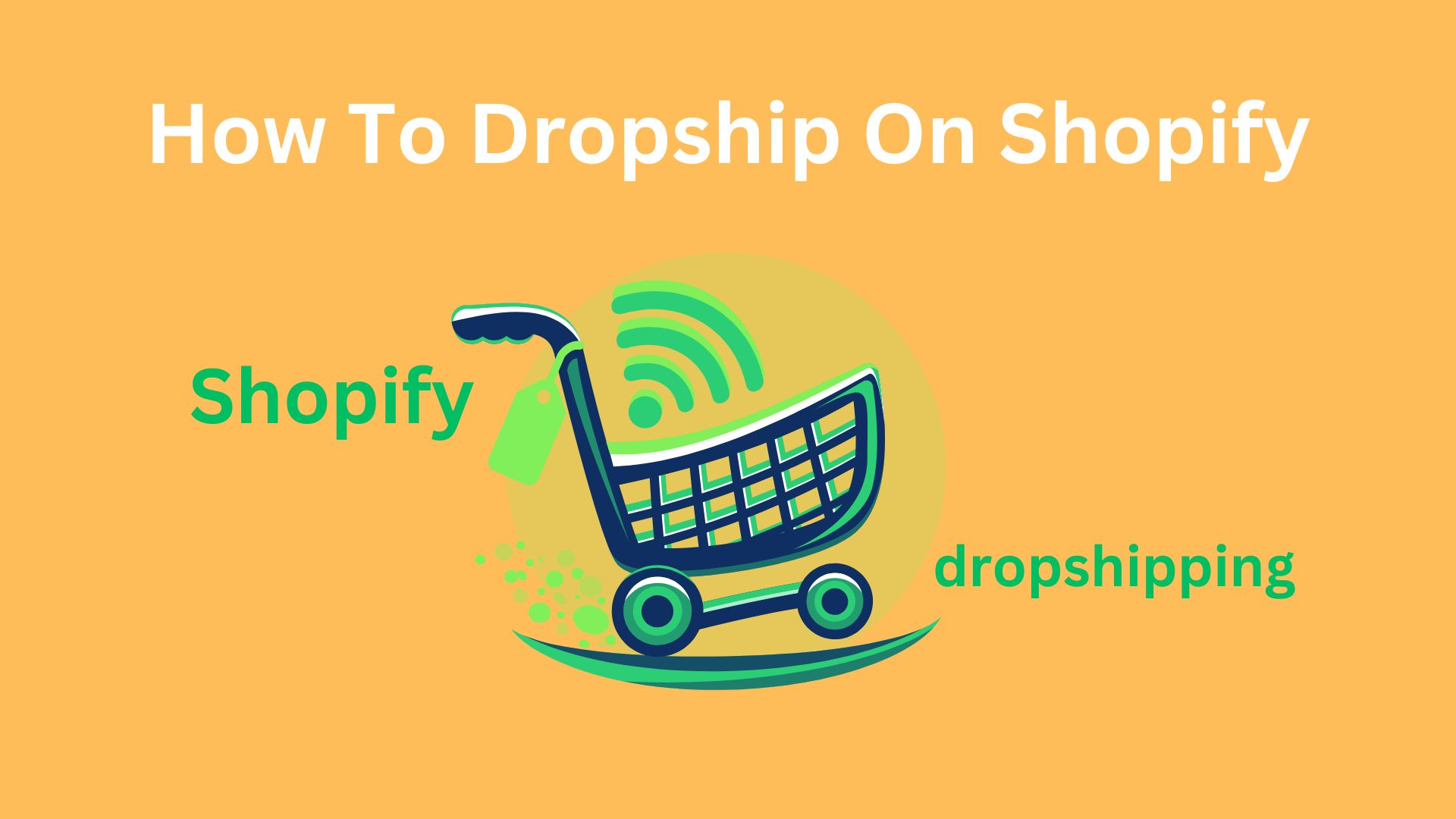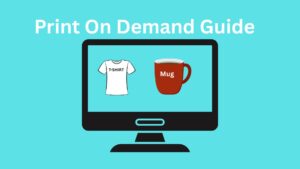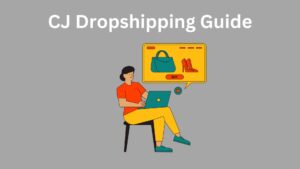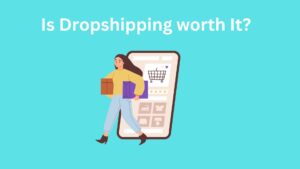Shopify dropshipping is one of the most popular ways to start an online business in 2025. With e-commerce growing rapidly, many entrepreneurs are looking to start dropshipping on Shopify to build a profitable online store without holding inventory. Dropshipping allows store owners to sell products to customers without managing stock, making it a low-risk and cost-effective business model.
If you’re new to the idea of dropshipping or want to learn how to optimize your Shopify store for success, this guide is for you. In this article, we’ll explore how to start a dropshipping business on Shopify, set up a Shopify store, find the best dropshipping apps for Shopify, and select reliable suppliers. We’ll also cover Shopify payments, choosing the right Shopify plan, and the pros and cons of dropshipping so you can make an informed decision.
Key Takeaways
- Learn how to start a Shopify dropshipping store from scratch.
- Discover the best Shopify dropshipping apps to automate your business.
- Understand how to find reliable suppliers and source high-quality products.
- Set up Shopify payments for seamless transactions.
- Grow your dropshipping business with proven strategies.
What is Shopify Dropshipping?

Dropshipping is an e-commerce business model where store owners sell products without holding inventory. When a customer places an order, the store owner purchases the item from a supplier, who then ships it directly to the customer. Shopify is one of the best platforms for dropshipping, as it provides powerful tools to create, manage, and grow an online store with ease.
Shopify dropshipping offers a seamless way to start an online store without the need for large upfront investments. By using Shopify, you can set up a professional store, integrate a dropshipping app, and connect with reliable suppliers to source products.
Why Start a Shopify Dropshipping Business?
Starting a dropshipping business on Shopify is an excellent choice for entrepreneurs who want to sell online with minimal risk. Shopify provides a user-friendly platform, access to many dropshipping apps, and seamless integration with suppliers. Here are some key reasons why Shopify is a great choice for dropshipping:
- Low Startup Costs: You don’t need to buy inventory upfront, reducing the financial risk.
- Easy Store Setup: Shopify makes it easy to create your Shopify store, even if you have no prior experience.
- Automation Tools: The best Shopify dropshipping apps automate order fulfillment and inventory management.
- Global Reach: Sell products to customers worldwide without worrying about logistics.
- Scalability: Shopify lets you grow your dropshipping business effortlessly as sales increase.
How To Dropship On Shopify
Understanding how dropshipping work is essential before launching your store. Here’s how the process works:
- Choose a Niche: Identify profitable products to sell and find reliable suppliers.
- Set Up Your Shopify Store: Customize your Shopify theme, add products, and optimize your store.
- Integrate a Dropshipping App: Use dropshipping apps like DSers or Spocket to source products.
- List Products in Your Store: Import products from suppliers into your Shopify storefront.
- Set Up Shopify Payments: Activate Shopify payments to accept online transactions.
- Market Your Store: Use social media, SEO, and paid ads to attract customers.
- Manage Orders: When a customer buys a product, the supplier fulfills the order.
Setting Up Your Shopify Store (Step-By-Step Guide)
Creating a Shopify Account and Choosing a Plan
To start dropshipping with Shopify, the first step is to create a Shopify account. Visit the Shopify website and click on the “Start Free Trial” button. Shopify for free allows you to explore the platform before committing to a Shopify plan.
When signing up, you’ll be asked for a store name, email address, and password. After completing the registration, you’ll gain access to the Shopify admin dashboard, where you can begin setting up your store.
Choosing the Right Shopify Theme
Your Shopify theme determines how your store looks and feels. A well-designed Shopify storefront can enhance user experience and increase conversions. Shopify offers free and premium themes, allowing you to customize your Shopify store to match your brand.
To choose a theme:
- Visit the Shopify Theme Store and browse available options.
- Select a theme that suits your niche and target audience.
- Customize your Shopify theme using the built-in editor.
- Add branding elements such as logos, colors, and fonts.
Adding Products to Your Shopify Store
Once your store is set up, the next step is to add products to your Shopify store. You can do this manually or use dropshipping apps to import products directly from suppliers.
To add products manually:
- Go to your Shopify dashboard and navigate to the “Products” section.
- Click “Add Product” and fill in the product title, description, and price.
- Upload high-quality images and optimize product descriptions for SEO.
- Set up shipping options and inventory tracking.
If you use dropshipping apps like DSers or Spocket, you can easily import products with one click, saving time and effort.
Setting Up Shopify Payments
To process transactions, you need to activate Shopify payments. Shopify payments allow customers to pay using credit cards, PayPal, and other payment methods. To activate Shopify payments:
- Go to “Settings” in your Shopify admin panel.
- Select “Payments” and click on Shopify Payments.
- Enter your business and banking details.
- Enable payment methods like credit cards, Apple Pay, and Google Pay.
Once activated, Shopify payments will handle transactions, ensuring smooth and secure payments for your customers.
Choosing the Best Shopify Dropshipping Apps
To run a successful dropshipping business, you need the right tools. The Shopify App Store offers many dropshipping apps that help automate your business. Here are some of the best Shopify dropshipping apps in 2025:
- DSers: Officially partnered with AliExpress, DSers is one of the best dropshipping apps for Shopify.
- Spocket: Connects you with reliable suppliers from the US and Europe.
- Zendrop: Offers fast shipping and branded packaging.
- CJ Dropshipping: Provides global fulfillment services with low-cost shipping.
- AutoDS: An all-in-one dropshipping tool with automation features.
Using these Shopify apps can save time and improve efficiency, allowing you to focus on marketing and sales rather than order fulfillment.
Selecting the Right Dropshipping Suppliers
Choosing a reliable dropshipping supplier is crucial for your business’s success. The quality of products, shipping times, and customer service all depend on your supplier. Here’s how to find reliable dropshipping suppliers:
- Check Supplier Reviews: Use platforms like AliExpress, Spocket, and CJ Dropshipping to find top-rated suppliers.
- Test Products: Order samples to check product quality and shipping times.
- Look for Fast Shipping: Choose suppliers that offer quick and reliable delivery.
- Evaluate Customer Service: A responsive supplier will help you resolve issues quickly.
- Consider Local Suppliers: If you want to reduce shipping times, use Shopify dropshipping offers to find suppliers in your region.
By partnering with a reliable dropshipping supplier, you ensure customer satisfaction and build a trustworthy Shopify dropshipping store.
Marketing and Growing Your Shopify Dropshipping Business
Once your Shopify store is set up and ready to go, the next step is to attract customers and generate sales. Without proper marketing, even the best products will struggle to reach potential buyers. In this phase, we will cover essential marketing strategies, search engine optimization (SEO), paid advertising, and customer engagement techniques to grow your dropshipping business successfully.
Optimizing Your Shopify Store for SEO
Search Engine Optimization (SEO) is critical for driving organic traffic to your Shopify store. By optimizing your store for search engines like Google, you increase the chances of attracting potential customers who are searching for products online.
Keyword Research and Optimization
Start by researching keywords related to your niche. Use tools like Google Keyword Planner, Ahrefs, or Ubersuggest to find relevant search terms. Once you have a list of keywords, strategically place them in the following areas:
- Product Titles and Descriptions: Include relevant keywords naturally.
- Meta Titles and Descriptions: Optimize them to improve click-through rates.
- URLs: Keep URLs short and keyword-rich.
- Alt Text for Images: Helps search engines understand your images.
- Blog Content: Publish valuable content to attract organic traffic.
Site Speed and Mobile Optimization
Google prioritizes fast-loading websites that are mobile-friendly. To improve your store’s performance:
- Use lightweight Shopify themes optimized for speed.
- Compress images to reduce load times.
- Enable lazy loading for images.
- Optimize your site for mobile responsiveness.
Leveraging Social Media Marketing
Social media is a powerful tool for promoting your dropshipping business and engaging with potential customers. Focus on platforms where your target audience spends the most time, such as Instagram, Facebook, TikTok, and Pinterest.
Creating Engaging Content
To build brand awareness and attract followers:
- Share high-quality product images and videos.
- Create user-generated content by encouraging customers to share their purchases.
- Post behind-the-scenes content to build trust.
- Use trending hashtags to increase discoverability.
Influencer Marketing
Partnering with influencers can help you reach a wider audience. Consider collaborating with micro-influencers (10k-50k followers) as they tend to have higher engagement rates.
Running Paid Advertising Campaigns
Paid advertising can help you scale your dropshipping business quickly. The most popular ad platforms for Shopify store owners include:
Facebook and Instagram Ads
- Target Specific Audiences: Use Facebook Ads Manager to define demographics, interests, and behaviors.
- Retargeting Ads: Show ads to people who visited your store but didn’t make a purchase.
- Lookalike Audiences: Find new customers similar to your existing ones.
Google Ads
Google Shopping Ads display your products at the top of search results, driving high-intent traffic to your store.
TikTok and Pinterest Ads
Both platforms are visual-heavy and work well for showcasing trending products through engaging video ads and pin-based promotions.
Email Marketing for Customer Retention
Email marketing is one of the most cost-effective ways to retain customers and drive repeat sales. Build an email list using:
- Pop-up Signups: Offer a discount or freebie in exchange for email addresses.
- Abandoned Cart Emails: Recover lost sales by reminding customers to complete their purchase.
- Personalized Product Recommendations: Send targeted emails based on browsing history.
Customer Service and Engagement
Providing excellent customer service builds trust and increases repeat business. To enhance the shopping experience:
- Live Chat Support: Use Shopify apps like Tidio or Gorgias.
- Easy Return Policies: Clearly state your return policy.
- Quick Response Times: Engage with customers on social media and respond to inquiries promptly.
Scaling Your Dropshipping Business
As your store grows, consider expanding your product range, testing new niches, and automating processes to improve efficiency. Scaling strategies include:
- Using Automation Tools: Automate order fulfillment and customer service with Shopify apps.
- Expanding to International Markets: Sell to customers in different regions.
- Exploring Subscription Models: Offer subscription boxes for recurring revenue.
By implementing these strategies, you’ll be well on your way to running a successful Shopify dropshipping business in 2025.
Managing and Scaling Your Shopify Dropshipping Business
After setting up your Shopify store and implementing marketing strategies, the next step is managing operations efficiently and scaling your business for long-term success.
Order Fulfillment and Logistics
Efficient order fulfillment is crucial for a smooth shopping experience. Since dropshipping relies on suppliers to handle shipping, you must ensure that orders are processed correctly and delivered on time.
How to Handle Orders Efficiently
- Automate Order Processing: Use dropshipping apps like DSers or AutoDS to automatically send orders to your supplier.
- Track Shipments: Choose suppliers that provide tracking numbers and estimated delivery dates. Shopify apps like AfterShip can help customers track their orders.
- Reduce Delivery Time: Work with multiple reliable suppliers to fulfill orders from warehouses closer to your customers.
Dealing with Refunds and Returns
Since you don’t control inventory, handling returns can be challenging. Here’s how to manage them:
- Set a Clear Return Policy: Define a refund and return policy in your Shopify store to avoid confusion.
- Communicate with Suppliers: Some suppliers accept returns, while others do not. Understand their policies before listing products.
- Offer Excellent Customer Support: Address refund and return requests quickly to maintain a good reputation.
Customer Service and Retention Strategies
A successful dropshipping business doesn’t just focus on acquiring customers—it prioritizes keeping them satisfied. Offering great customer service can lead to repeat business and referrals.
Best Practices for Customer Support
- Use Shopify Email and Live Chat: Enable live chat through Shopify apps like Tidio or Zendesk to respond to inquiries quickly.
- Create a Help Center: Include FAQs, shipping policies, and return information on your Shopify website.
- Respond Promptly: Customers expect fast responses. Aim to reply to inquiries within 24 hours.
Building Long-Term Customer Relationships
- Implement Loyalty Programs: Reward repeat customers with discounts and promotions.
- Collect Customer Feedback: Ask for reviews and use them to improve your store.
- Offer Personalized Discounts: Send special offers to past customers to encourage repeat purchases.
Tracking and Analyzing Store Performance
To grow your dropshipping business, you need to track key performance indicators (KPIs) and analyze what’s working.
Key Metrics to Monitor
- Conversion Rate: The percentage of visitors who make a purchase.
- Average Order Value (AOV): The average amount customers spend per order.
- Customer Acquisition Cost (CAC): The cost of acquiring a new customer through ads or marketing.
- Customer Lifetime Value (CLV): The total revenue a customer generates over time.
Using Shopify Analytics and Google Analytics
- Shopify Analytics: Monitor store performance through your Shopify dashboard.
- Google Analytics: Set up Google Analytics to track website traffic, user behavior, and conversion rates.
- Heatmap Tools: Use Hotjar or Crazy Egg to analyze how visitors interact with your store.
Automation and Outsourcing
As your dropshipping store grows, automation and outsourcing can help you save time and focus on scaling.
How to Automate Your Dropshipping Store
- Automate Order Fulfillment: Use tools like DSers and Spocket to process orders automatically.
- Schedule Social Media Posts: Use tools like Buffer or Hootsuite to manage social media content.
- Email Marketing Automation: Set up automated email campaigns with Klaviyo or Omnisend.
When to Outsource Tasks
If you find yourself overwhelmed, consider outsourcing tasks such as:
- Customer Support: Hire virtual assistants to handle customer inquiries.
- Marketing: Work with freelancers for SEO, social media, or ad management.
- Product Research: Pay for research services to find trending products to sell on Shopify.
Scaling Your Shopify Dropshipping Business
Once you’ve optimized your store and operations, the final step is scaling for increased profits.
Expanding to New Markets
- Sell Globally: Partner with suppliers that offer international shipping.
- Use Multi-Language Features: Enable multiple languages on your Shopify store to attract international customers.
Adding New Products and Niches
- Expand Your Product Line: Find complementary products to sell online to increase revenue.
- Create Private Label Products: Work with suppliers to add your branding to products.
Increasing Your Marketing Budget
As profits grow, reinvest in marketing by scaling Facebook Ads, influencer partnerships, and retargeting campaigns.
Here’s a general conclusion and a FAQs section for your Shopify Dropshipping guide:
Conclusion- Shopify Dropshipping
Shopify dropshipping remains one of the most accessible and low-risk ways to start an online business in 2025. With its user-friendly platform, automation tools, and global supplier network, Shopify makes it easy for entrepreneurs to launch and grow a successful e-commerce store without holding inventory.
While dropshipping has its challenges—such as competition, supplier reliability, and profit margins—it can be a profitable venture if approached strategically. Choosing the right niche, using the best Shopify dropshipping apps, optimizing your store for conversions, and investing in marketing are key steps toward building a sustainable business.
Success in Shopify dropshipping comes from continuous learning, testing, and adapting. By staying updated on market trends, leveraging automation, and providing excellent customer service, you can scale your business and achieve long-term profitability. Whether you’re starting a side hustle or aiming to build a full-time online business, Shopify dropshipping offers the tools and opportunities to make it happen.
Explore More Articles
FAQs: Shopify Dropshipping
1. Is Shopify good for dropshipping?
Yes, Shopify is one of the best platforms for dropshipping because it offers user-friendly store setup, integrations with top dropshipping apps like DSers and Spocket, and built-in e-commerce features that streamline order processing and payments.
2. How much does it cost to start dropshipping on Shopify?
The cost varies, but at a minimum, you’ll need to pay for a Shopify plan ($39/month for the Basic plan), a domain name ($10–$15/year), and marketing expenses. Additional costs may include premium themes, apps, and paid advertising.
3. Can I start Shopify dropshipping with no money?
While you can start with a free trial and use free themes and apps, you’ll eventually need to invest in a Shopify plan, marketing, and product testing to succeed. A small budget for ads or organic marketing efforts is recommended.
4. What are the best Shopify dropshipping apps?
The best apps for dropshipping on Shopify include:
- DSers: Best for AliExpress product sourcing.
- Spocket: Ideal for US/EU-based suppliers.
- Zendrop: Offers faster shipping and branding options.
- AutoDS: All-in-one automation tool.
- CJ Dropshipping: Global fulfillment with low-cost shipping.
5. How do I find winning products for my Shopify store?
You can find trending products using tools like AliExpress Dropshipping Center, Google Trends, TikTok trends, and product research tools like Sell The Trend or Ecomhunt. Look for products with high demand, low competition, and good profit margins.
6. How long does it take to make money with Shopify dropshipping?
It depends on factors like product selection, marketing strategy, and competition. Some sellers make profits within a few weeks, while others take months to see consistent income. Effective marketing and optimization can speed up the process.
7. Is Shopify dropshipping still profitable in 2025?
Yes, Shopify dropshipping is still profitable, but competition has increased. Success requires selecting the right niche, using data-driven marketing, offering excellent customer service, and staying ahead of trends.
8. How do I handle returns and refunds in dropshipping?
Since you don’t hold inventory, your return policy depends on your suppliers. Some suppliers accept returns, while others do not. Communicate with suppliers beforehand, clearly state your policy on your website, and offer refunds or store credits when necessary to maintain customer satisfaction.




